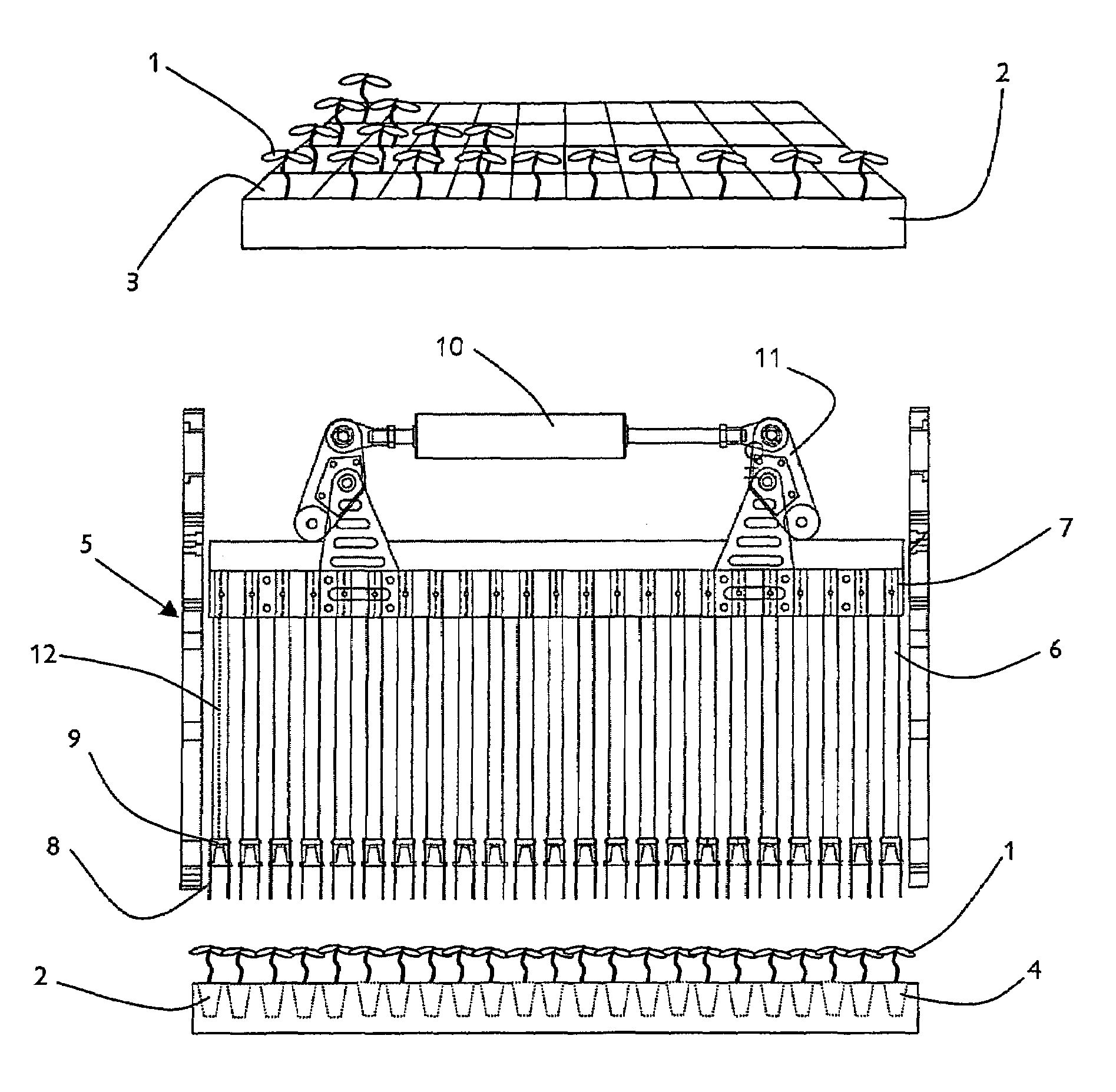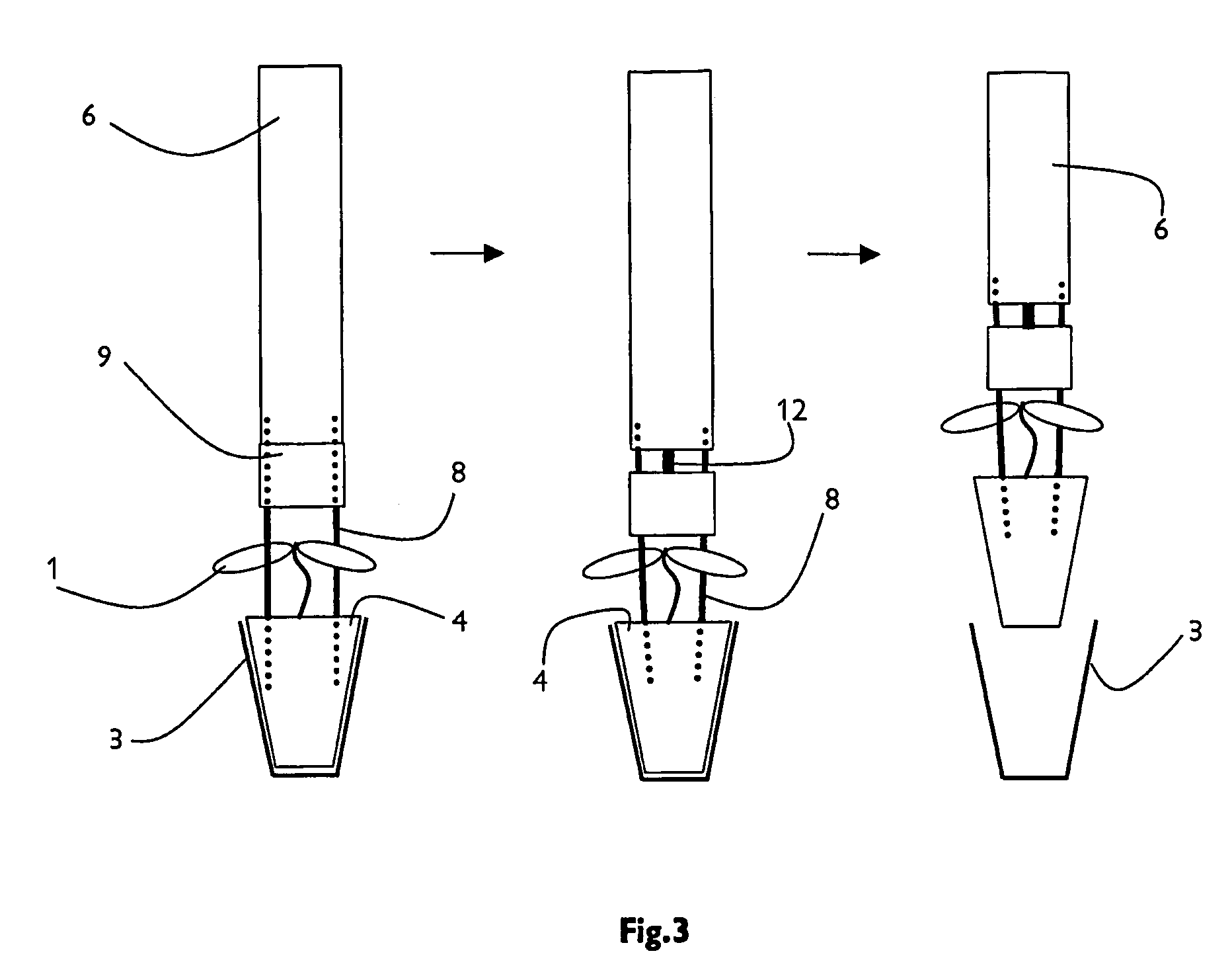Automated planter
a planter and automatic technology, applied in the field of automatic planting, can solve the problems of limited work hours, high labor intensity of farmers, limited work hours, etc., and achieve the effect of minimal damage to the root structur
- Summary
- Abstract
- Description
- Claims
- Application Information
AI Technical Summary
Benefits of technology
Problems solved by technology
Method used
Image
Examples
Embodiment Construction
[0092]It is standard practice to grow plants 1 from seed in propagation trays 2. Such practice allows the farmer to easily control the plant's environment until it has grown to a suitable age. Propagation trays come in a range of sizes, and can have a range of cells 3 therein. The type of propagation tray used can depend on the type of plant being grown. In FIG. 1, a typical propagation tray 2 is illustrated; the tray is partially stocked with plants 1, each plant having its own individual cell 3.
[0093]Certain embodiments of the invention carry out the task of extracting plants, from such propagation trays, and plant the extracted plants in the ground.
[0094]Extraction of the plants from their propagation trays, and transport of the plants to an automated planting device are functions which are automated in certain embodiments of the invention.
[0095]FIGS. 2 & 3 illustrate the components used, in a preferred embodiment, to automate the extraction function.
[0096]In FIG. 2, the alignmen...
PUM
 Login to View More
Login to View More Abstract
Description
Claims
Application Information
 Login to View More
Login to View More - R&D
- Intellectual Property
- Life Sciences
- Materials
- Tech Scout
- Unparalleled Data Quality
- Higher Quality Content
- 60% Fewer Hallucinations
Browse by: Latest US Patents, China's latest patents, Technical Efficacy Thesaurus, Application Domain, Technology Topic, Popular Technical Reports.
© 2025 PatSnap. All rights reserved.Legal|Privacy policy|Modern Slavery Act Transparency Statement|Sitemap|About US| Contact US: help@patsnap.com



